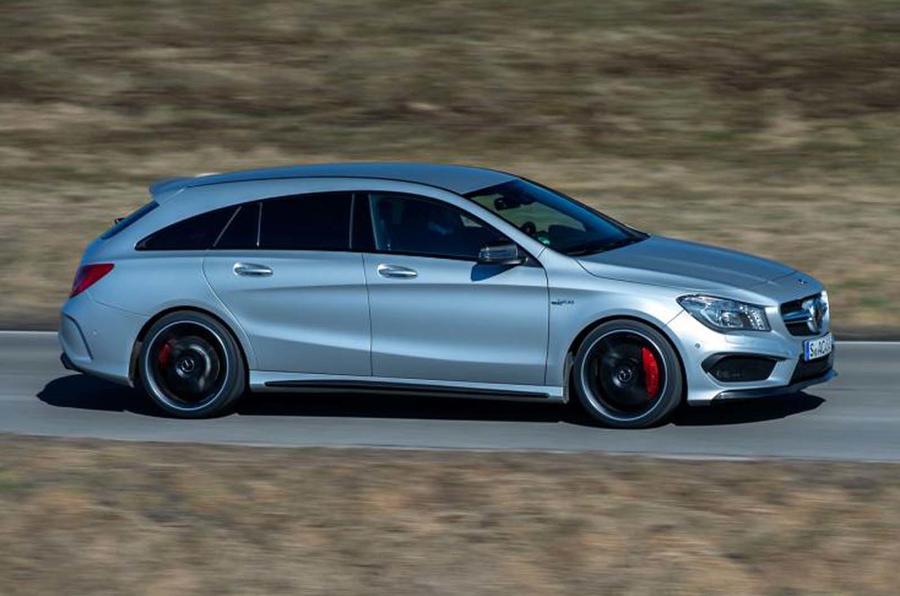The most successful car firms are those that can spot trends far into the future and start making cars ready to catch them. See: Nissan.
There are those who raised eyebrows towards Nissan when it abandoned making cars like the Almera and Primera – smooth-riding, reliable, trustworthy, boring family cars like everybody else was making, and carried on making – and decided its large passenger car focus was going to be entirely about weird 4x4s and SUVs and ‘what-is-a-crossover- anyway?’ instead. I know. Ridiculous.
Only now, guess what? It’s not so ridiculous at all. The Nissan Qashqai and Nissan Juke routinely appear in bestselling-car lists right across Europe and it took a decade or more for some car makers to catch on. I could well understand why other manufacturers didn’t immediately follow Nissan, but the absence of an SUV or crossover from several big companies’ line-ups until the past four or five years has remained something of a mystery.
But I’m also wondering how often far-sighted manufacturers actually spot trends emerging, and how much they create trends in the first instance. After all, if no car exists for people to buy, how do you know that’s what they’re going to want?
I’m not sure you just ask them.
The old ‘faster horses’ quote rightly or wrongly attributed to Henry Ford about asking 20th-century travellers what they wanted applies. What do I want from a fridge? Somewhere to keep the veg cold and a little light that comes on when the door opens. But what if a fridge could be more than that? Sometimes it takes a visionary to show you.
If you’d asked drivers 15 years ago what they wanted from a car, would they really have said “a better-looking car, but one that’s heavier, thirstier, worse-handling and worse-riding”? Great: have a crossover.
The SUV/crossover/4x4 thing shows no signs of letting up, but what comes after that? Peugeot, Mercedes and Kia wonder if it’ll be lower, more sleek-looking tourers; lush estates and fastbacks.
So far only the Mercedes CLA Shooting Brake exists in small-car- size, but Kia thinks its recently-revealed, similarly designed Proceed will soon be taking 20% of all Kia Ceed sales. If it is a trend, there’s good reason with it: lower and lighter than crossovers, they’re easier to meet efficiency targets with. Thus primed, in a decade I wonder how established this body shape might be. And if it is, which manufacturers will still be catching up. If you’re not going to start the band touring, at least jump on the wagon before it passes.









Join the debate
Add your comment
Packaging
Many here have mentioned the elevated driving position, but very few have considered packaging, i.e., the amount of available space for a given footprint. To me, that's the number one virtue in a car. The cars I've cherished the most were the LWB Mercedes A-Class and, one size bigger, the VW Touran. Both Diesel, Automatic, Leather. There's no outdoing an MPV in the packaging department, but to many people's eyes, they look unsexy. So the SUV/Crossover is second best, with better packaging and better image than an estate. The handling, as mentioned before by others, is a non-issue given the increasingly unreasonable speed limits. The increased consumption does not seem to be a cause for concern, although that may change given the demonisation of Diesel.
Agree, mpv's have better
Agree, mpv's have better packaging/ interior space compared with their same size hatch siblings but I am not convinced suv/ crossovers do, after all most are jacked up hatches and aside from height offer no more interior space than their hatch or estate equivalents, for example, the peugeot 2008 suv has no more interior space than its predecessor the 207 estate. Its just taller, the same can be said of the mazda cx3 vs mazda 2 etc.
As others have said, as time
As others have said, as time goes on we are presented with less and less choice for the type of car we drive. Manufacturers tell us no-one is buying this or that, but is it really the case, or is it more that they are making it easier (and cheaper) for themselves. Of course car companies are in business to make profits, but it appears that as soon as demand wanes even slightly for a particular body style or transmission that they throw the towel in, rather than continuing to offer the choice, unless, of course, it is a limited niche that they can charge silly money for. Maybe they are well aware that when full autonomy gets here that we won't need loads of different marques and companies, one or two will do, so they're making as much as they possibly can 'while the sun shines'.
I dont want to see another
I dont want to see another mega-trend. But instead more choice.
Mechanically we have lost the non premium 6 cylinder car, we are losing anything quick with a manual. Everything with less than 4 doors is on the endangered list too. Even diesels are going (thankfully). How long before we are all driving a 3 cylinder VW pretend SUV clone?
Thinking about it, all of the news cars i have bought have had either 2 or 3 doors, i have had 4 door saloons, but never new. Nearly all manual, and none have ever had a turbo. There have been convertibles and coupes in there. Almost none have a modern equivilent.
Its all rather sad. Having said that a proper shooting brake sounds appealing, in the style of a Lynx Eventer, or Reliant Scimitar probably, Obviously with a large petrol engine and a manual box (i know, dream on)